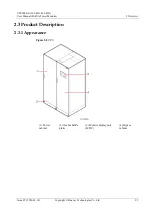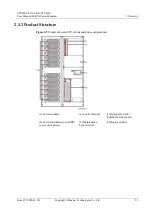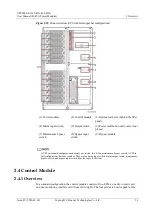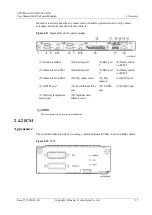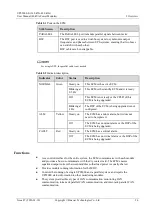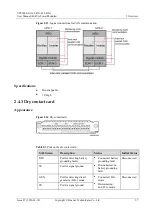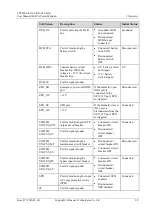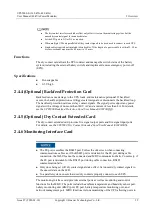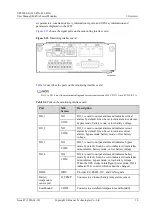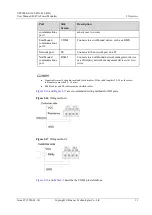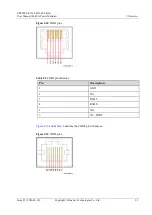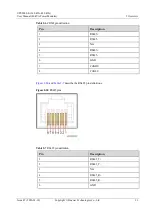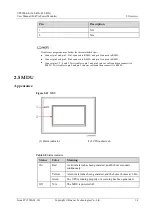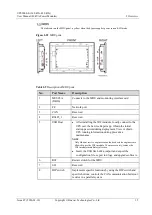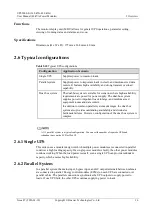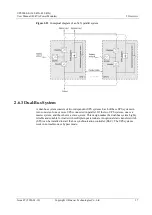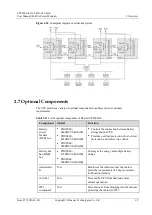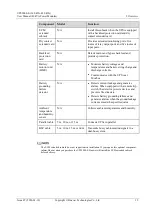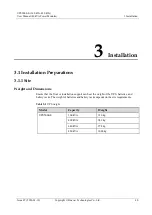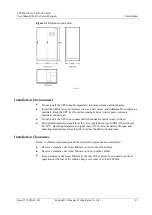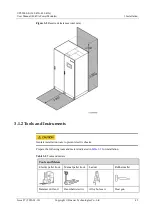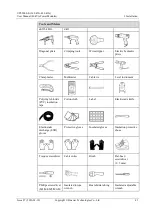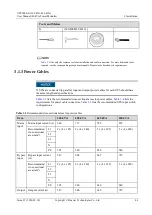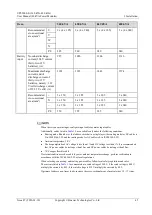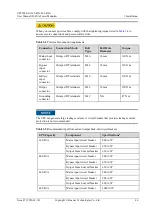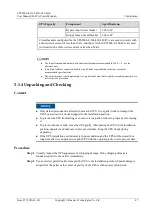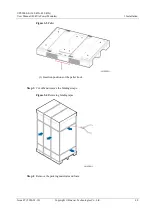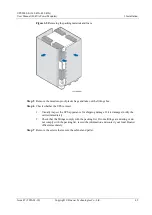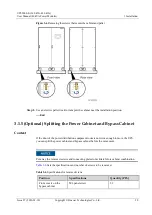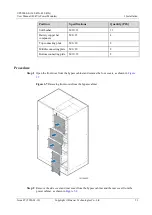
UPS5000-E-(360 kVA-480 kVA)
User Manual (40 kVA Power Modules)
2 Overview
Issue 07 (2020-01-10)
Copyright © Huawei Technologies Co., Ltd.
36
Functions
The monitor display unit (MDU) allows for general UPS operations, parameter setting,
viewing of running status and alarms, and so on.
Specifications
Dimensions (H x W x D): 175 mm x 264 mm x 40 mm
2.6 Typical configurations
Table 2-10
Typical UPS configurations
Configuration
Application Scenario
Single UPS
Supplies power to common loads.
Parallel system
Supplies power to important loads in small- and medium-sized data
centers. It features high availability and strong transient overload
capability.
Dual-bus system
The dual-bus system is suitable for scenarios where high availability
requirements are posed for power supply. The dual-bus system
supplies power to important loads in large- and medium-sized
equipment rooms and data centers.
In addition to common parallel system advantages, the dual-bus
system also provides outstanding availability and eliminates
bottleneck failures. However, configuration of the dual-bus system is
complex.
A 1+1 parallel system is a typical configuration. You can set the number of requisite UPSs and
redundant ones on the LCD or WebUI.
2.6.1 Single UPS
This series uses a modular design in which multiple power modules are connected in parallel
to deliver a high loading capacity. If a single power module is faulty, the other power modules
continue working. When the load power is small, even a single UPS can provide redundant
capacity, which ensures high reliability.
2.6.2 Parallel System
In a parallel system, the mains input, bypass input, and AC output terminals between cabinets
are connected in parallel. Energy control modules (ECMs) on each UPS are connected over
parallel cables. The parallel connections synchronize the UPS outputs to supply power to
loads. If one UPS fails, the other UPSs continue supplying power to loads.

